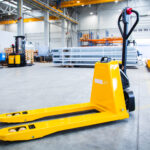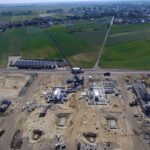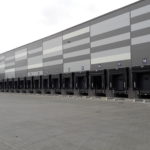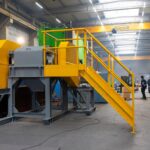The problem of parking was encountered for the first time along with the construction by Karl Benz in 1886 of the first vehicle powered by an internal combustion engine. The increase in demand for parking spaces appeared along with the launch of factories producing cars in the serial system. The first buildings for its storage were initially based on traditional solutions, evolving to multi-level car parks and car garages, which were established at the beginning of the 20th century as a response to the growing needs of parking in large cities.
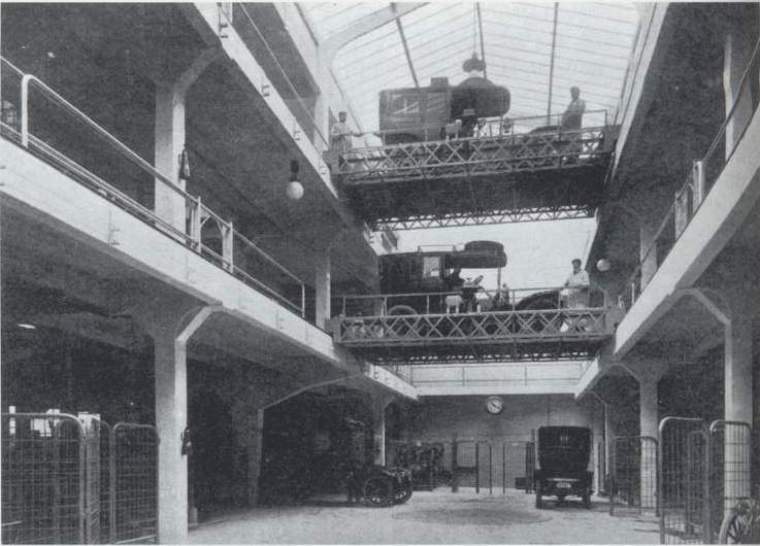
The first automated garage in the world – Rue de Ponthieu, 1905 in Paris, source
Together with technological progress, it has evolved into innovative automatic parking systems. The first documented solution of this type was Garage Rue de Ponthieu, which was founded in 1905 in Paris. The system consisted of an elevator where the car was driving, and then it was raised several floors higher, where the operator parked it inside the building. Over the years, automatic car parks developed slowly, and in the 1920s they came to the US, especially to large metropolises such as New York. There, after the Second World War, they survived the greatest of their prosperity and are still popular nowadays.
Below we present films documenting the operation of car parks in the 1920s in the USA. The solutions used there are still impressive:
However, the US is not the leader in the field of parking technology. Most of this type of construction was created in Japan, where parking places in overcrowded Asian cities are very valuable. Car parks with up to 100,000 parking places are build there every year, while in Europe, its only around 40,000 spaces.
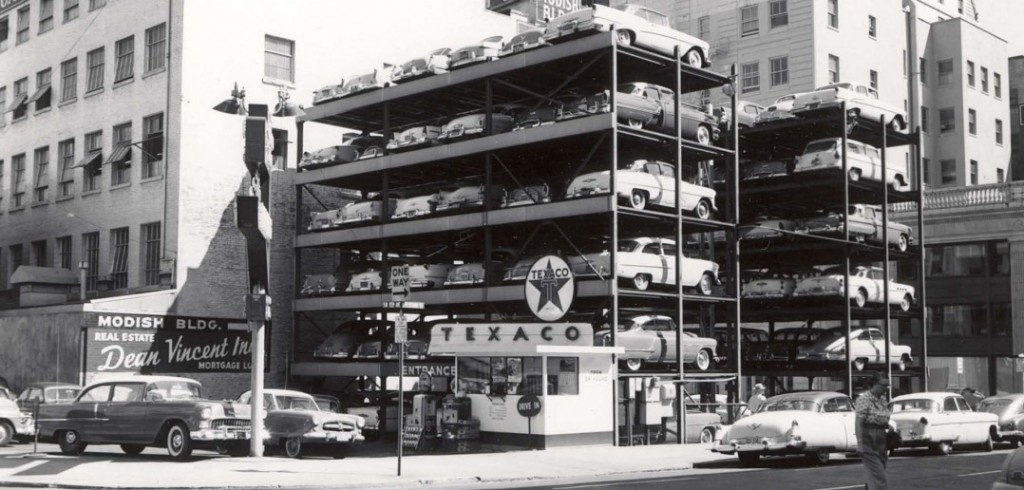
Parking in Portland, USA, source
In Poland, this solution appeared relatively recently. However, an increase in their popularity is still expected due to the increasing urbanization processes in Polish cities. They cause the growing problem of parking cars in agglomerations.
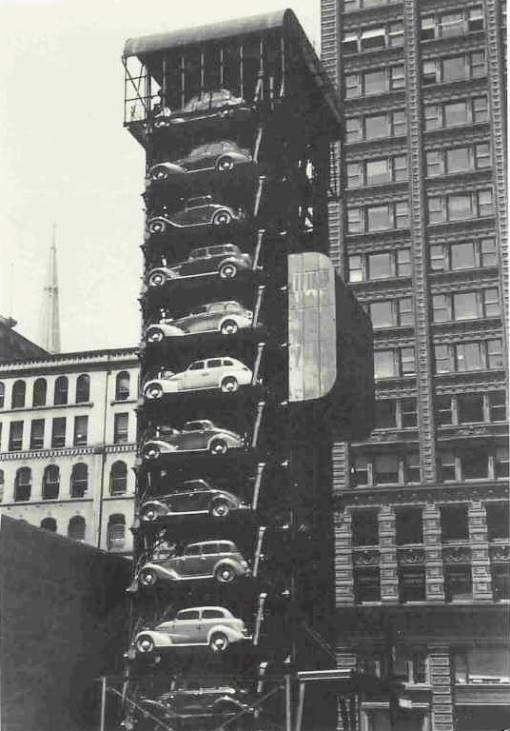
Parking in Chicago, 1937, source
Some numbers: in 2011 in Warsaw there were 33 cars for one parking space. In the city that is the leader of this statistic, Gorzów Wielkopolski, up to 75! Over the last 20 years, the total number of cars has increased fourfold, and already around 1985 Poland has recorded an indicator of the number of cars per 1000 inhabitants equal to the world average. Currently, it is around 600 cars per 1000 inhabitants and has a growing trend.
Adding to this the development of cities and striving for renovation and reconstruction of their centers, it is clearly evident that we need to solve more and more difficult problems of technical infrastructure, including parking and garage. This is one of the most important urban problems at the moment, requiring a rational parking policy, consistent with the city’s transport and investment policy. Along with the modernization of city centers, investors also face the problem of real lack of space for the creation of places, eg in renovated old tenement houses or newly created hotels, shopping centers, etc. Failure to provide convenient parking facilities within them is an important factor affecting the demand, which is why it is necessary to see an effective solution to this issue.
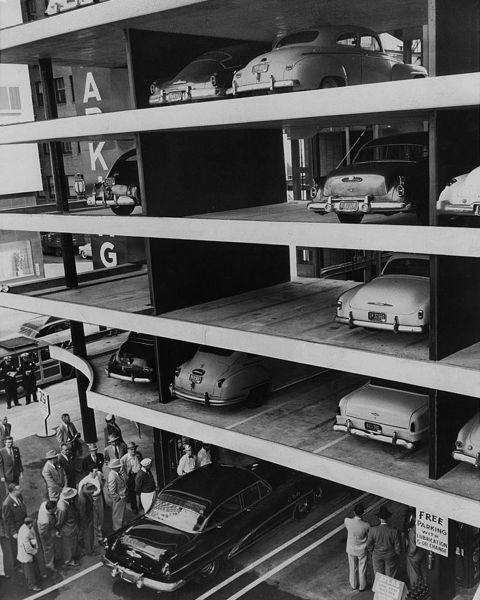
Opening of the parking in Los Angeles in 1953, source
Here comes the efficiency comparison of traditional car parks and multi-level systems. In those traditionally solved ones, the place intended for a stoppage usually takes only about 1/3 of the total area of the object. The rest is the infrastructure. In automatic systems, more vehicles can be accommodated on the same surface. It is also economically advantageous, since the value of the land for a parking space often exceeds the value of the car that is parked there. Adding to this the costs of infrastructure (driveways, lighting, ventilation systems, monitoring, etc.), the final cost of parking spaces takes up to 20% of the total investment value. The use of modern technologies seems to be much more profitable here.
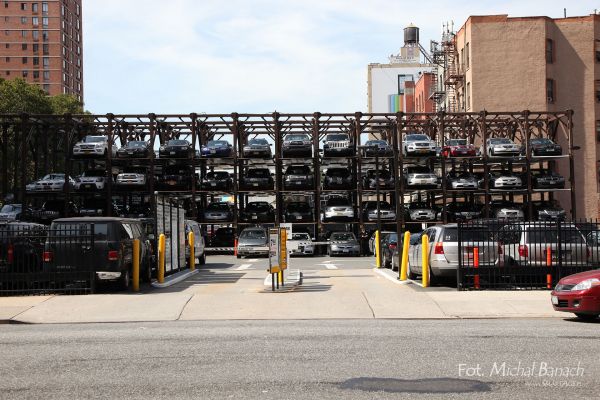
Modern parking in New York, fot. Michał Banach, source
MODULO Parking company noticing the problem associated with parking in agglomerations, has created a new product – a series of MODULO automatic parking. Offering the customer flexible solutions, adapted to the conditions of development and specific investment needs, we respond to the growing needs of city centers and housing estates. The Polish producer wants to revolutionize Polish cities, and by offering competitive prices on the market, encourage foreign clients to cooperate.
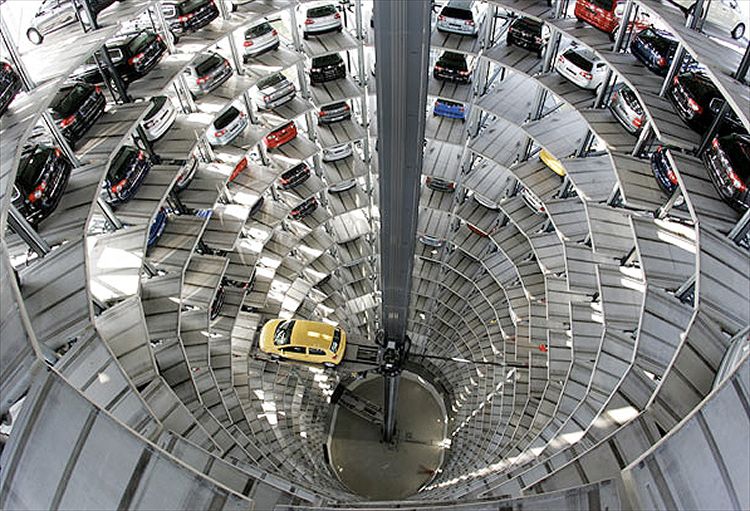
The most popular automatic parking system at the Volkswagen factory in Wolfsburg, Germany, source



